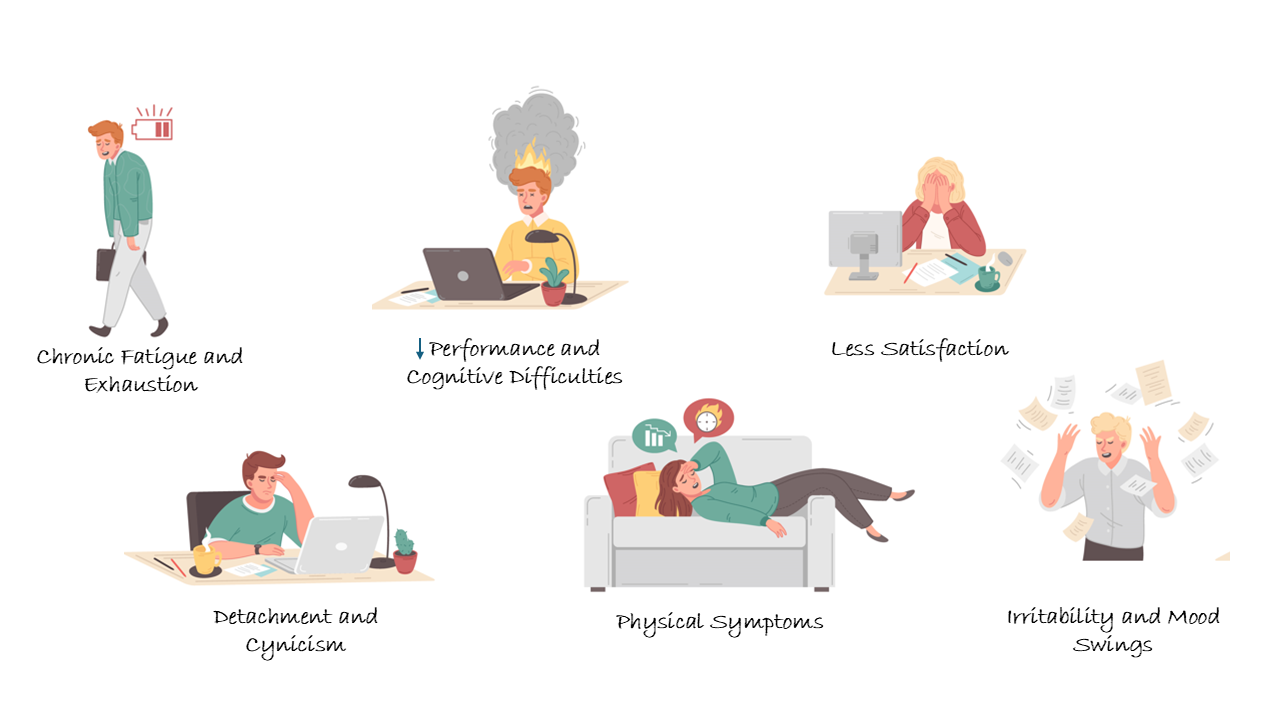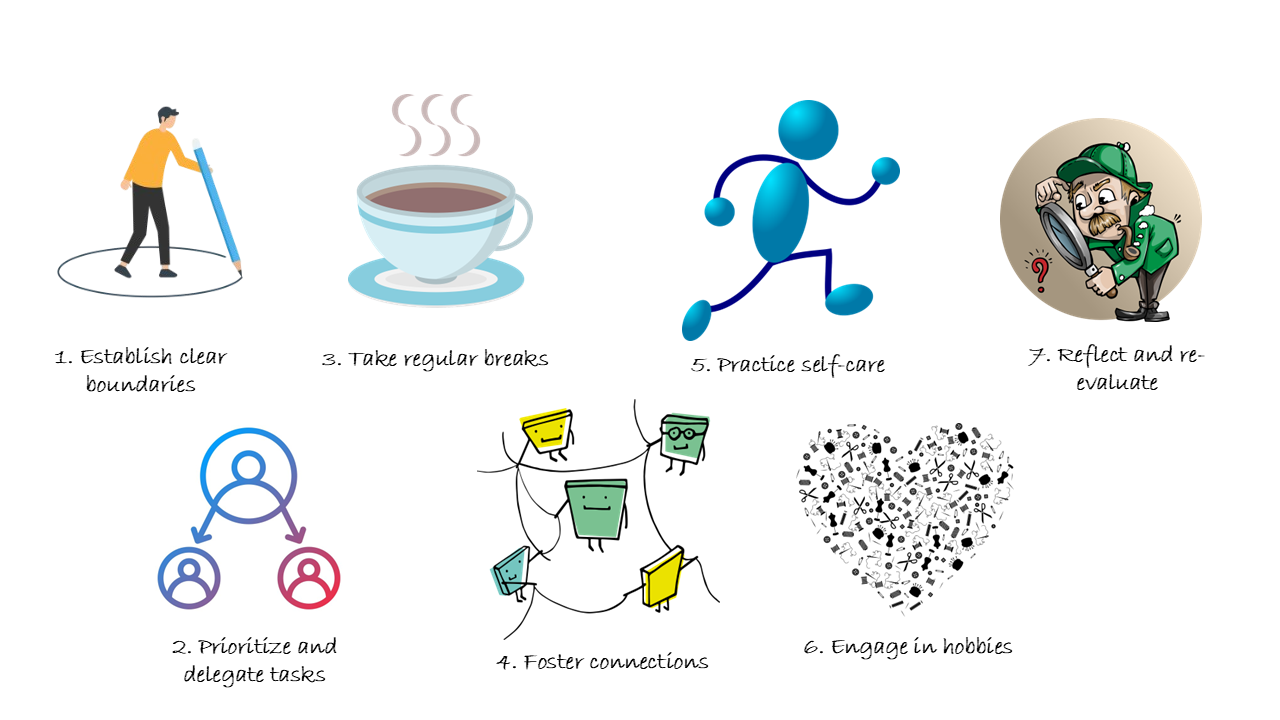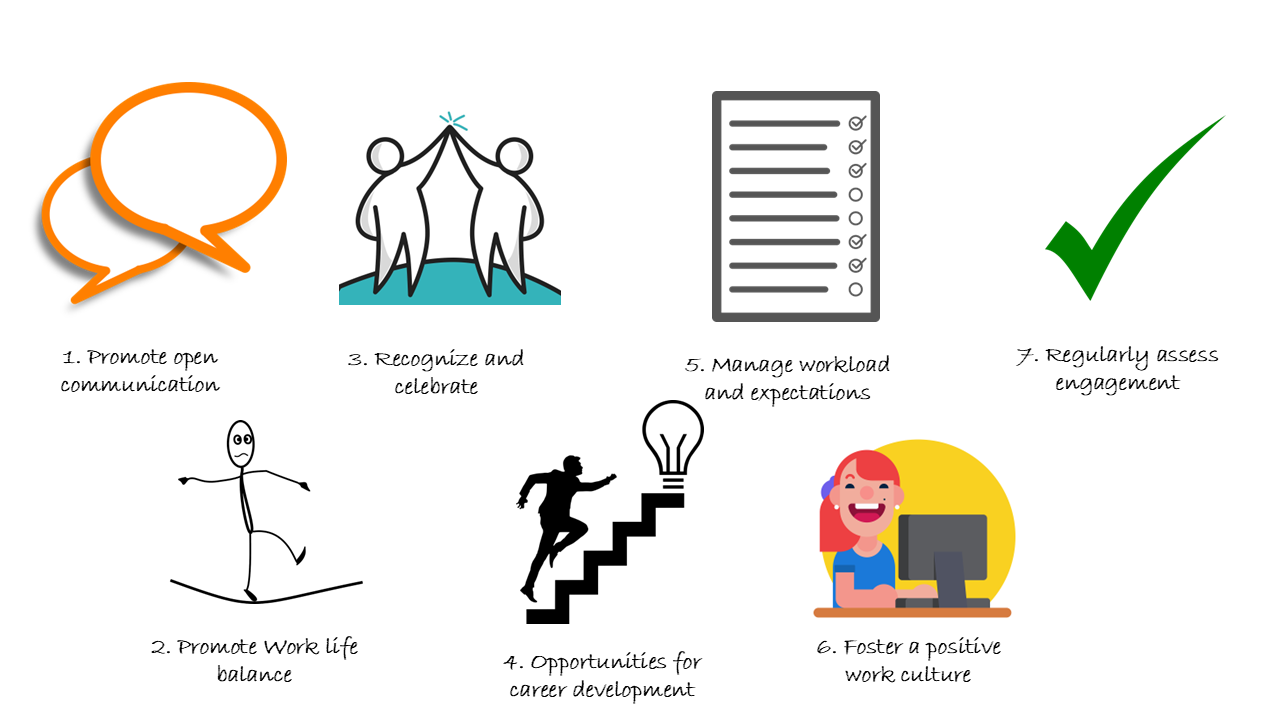how to prevent job burnout
Jenny was staring at her computer screen once again, with an endless to-do list, and palpable fatigue that no amount of caffeine could shake. Feeling disengaged and demotivated most days, she feels that there is never enough time to get things done. She is snappy with colleagues and feels demoralized and perpetually behind. If this scenario feels familiar, you may be inching towards something many professionals dread—job burnout. With the pace of life intensifying, burnout has become an increasingly common foe. This article explores how to prevent job burnout, or more specifically:
- What is job burnout
- The warning signs of job burnout
- 7 strategies the individual can do to prevent job burnout
- 7 strategies the HR department can do to prevent job burnout
What is job burnout?
Job burnout isn't just about feeling tired; it’s chronic stress that depletes your energy, chips away at your enthusiasm, and makes you feel emotionally and physically exhausted. According to the World Health Organization, burnout it’s a multifaceted condition that is characterized in the ICD-11 as
- Feelings of energy depletion or exhaustion
- Increased mental distance from one’s job, or feelings of negativism or cynicism related to one’s job; and
- Reduced personal efficacy.
The Warning Signs of Job Burnout
The first step to prevent job burnout is to recognize the early warning signs.

Chronic Fatigue and Exhaustion
One
of the early warning signs is overwhelming fatigue. This is not the average end
of the day tiredness it is a pervasive fatigue that not even a good night sleep
can fix. You might wake up tired and struggle to get through activities that
once felt easy. Over time, this chronic fatigue can evolve into significant
physical ailments, piling onto the stress already felt.
Detachment and Cynicism
Another
major indicator is a growing cynicism or detachment from your work. When you
find yourself thinking, "What’s the point?" more frequently, it may
be burnout whispering in your ear. What were once meaningful projects and tasks
may begin to feel pointless or frustrating. Accompanied with this can be a
level of jadedness towards colleagues and clients. You may just want to
disengage from work altogether.
Reduced Performance and Cognitive Difficulties
Perhaps you've noticed it is difficult to concentrate. Or you might forget more, or notice that creative thinking is diminished, or problem solving is more challenging. If so, then burnout could be sneaking into your professional life. These things can impact on productivity which further increases stress and frustration creating a vicious self-reinforcing burnout cycle.
Physical
Symptoms
The mind-body connection means stress can manifest as physical symptoms, and burnout is no exception. Headaches, nausea, or stomach aches may become more frequent. Some people experience changes in appetite or sleeping patterns, leading to weight fluctuations or insomnia. These physical signs are your body’s way of signaling something’s amiss.
Less Satisfaction
As burnout intensifies, your sense of satisfaction from professional accomplishments may diminish. Events or milestones that once motivated or excited you now feel underwhelming. There’s a loss of pride in work accomplishments, accompanied by an increasing feeling of inadequacy or self-doubt.
Irritability
and Mood Swings
Burnout can cause significant shifts in mood, including increased irritability or frustration. You might find yourself snapping at colleagues or reacting poorly to even minor inconveniences. These mood changes not only affect your work life but can put a strain on personal relationships, leading to isolation or misunderstanding.
Whether adopting individual strategies or advocating for organizational changes, understanding burnout prepares you to face it head-on and reclaim a healthier balance in your professional and personal life.
How to Prevent Job Burnout: 7 Personal Strategies
While you juggle a busyness that's already through the roof, knowing how to prevent job burnout is vital. Here are seven personal strategies you can implement today.

1. Set boundaries
Begin with setting boundaries. Easier said than done, right? But setting clear, enforceable limits on your work time can help protect your precious energy reserves.
- Try to define specific work hours and stick to them. This means resisting the urge to check emails or work late into the night unless absolutely necessary.
- Communicate your availability to colleagues and supervisors, so your downtime is respected.
- Say No more often. To do this, an easy way is to say yes to the most important things in your life and then schedule them and guard that slot like the last cookie at a party.
Remember, to be at your best for you and your team, you need to be well-rested and engaged.
2. Prioritize and Delegate Tasks
All tasks are not created equal. Some need to be done now, others scheduled, and others need to be delegated or eliminated.
- At the end of each week, plot next week’s actions on the Eisenhower matrix to determine importance and urgency.
- Schedule in your calendar the urgent or important tasks, and look for others that you can delegate. By delegating you ease your workload but empowers others around you, fostering a collaborative environment. Share you plan with others.
- Communicate regularly to key stakeholders what your realistic expectations for delivery of tasks and projects.
3. Take Regular Breaks
Don't underestimate the power of short breaks. Often we feel unable to stop – we check emails while waiting in line for a coffee, or make phone calls in brief pockets of time between meetings. While it can feel essential to push ahead, short breaks are vital to your performance and overall wellbeing.
- Practice the Pomodoro Technique. This involves working for 25 minutes followed by a 5-minute break. This is repeated three or four times followed by a longer break. These breaks help rejuvenate your mind and enhance focus.
- In your breaks, step away from your desk—even for a brief moment. This break the cycle of stress and fatigue that leads to burnout.
4. Foster
Connections
Building strong relationships at work provides emotional support and can aid in alleviating stress. While you can’t choose who you work with you can choose to strengthen the bonds with the people you work with.
- Consider having lunch with a friendly colleague or take the time to chat about non-work-related topics.
- Participate in workplace social groups or clubs that align with your interests
- Encourage open and respectful conversation.
Fostering connections can significantly boost your mood and create a positive work environment.
5. Engage in Self Care
Self-care is crucial for maintaining a healthy work-life balance and preventing burnout.
- Schedule time for activities that promote relaxation, recharging, or well-being. This might include physical exercise such as running, cycling, of fitness classes.
- Consider using simple practices like deep breathing exercises or guided meditations to calm your mind and increase your focus.
- Ensure you get adequate sleep. Start with setting a consistent time that you go to bed and wake up. Consider establishing a calming bedtime routine—reduce screen time before bed, read a book, or enjoy a warm bath to aid restful sleep. Usually 7-9 hours is sufficient.
6. Engage in Hobbies
Dedicate time to activities you feel passionate about, which could range from painting to gardening or playing music. Hobbies act as a creative outlet, providing a break from work and allowing you to pursue what truly brings joy.
7. Reflect and re-evaluate
Regularly
reflect on what is contributing to your stress or dissatisfaction. Identifying
the causes of stress can help you to implement stress-reduction strategies. Reflect
on your work goals through a lens of your personal values and pursuits. Ask
yourself do they align, and if not, what can I do to align them more.
Sometimes, small adjustments in perspective or responsibilities can alleviate
burnout.
These strategies can seem daunting and overwhelming. However, even just a small gradual change can make a big difference to your mental wellbeing and job satisfaction. More personalized strategies and techniques to prevent burnout can be provided by therapy and counselling.
How to Prevent Job Burnout: 7 HR Strategies
Knowing how to prevent job burnout is also a responsibility for HR. Here are seven HR strategies you can implement today.

1. Promote Open Communication
How to prevent job burnout....open communication is key.
- Encourage a culture of transparency where employees feel comfortable voicing their concerns and providing feedback.
- Ensure there are regular check-ins and open-door policies. These can make employees feel heard and valued, reducing feelings of isolation or frustration that often contribute to burnout.
- Make a habit of giving feedback and encouraging open dialogue in your team.
2. Implement Flexible Work Policies and Encourage Work-Life Balance
There are a few positives to flexible work practices that include:
- employees can tailor their schedules to better fit their personal needs. This flexibility can alleviate stress.
- commuting time can be reduced which can help employees balance professional and personal responsibilities more effectively.
3. Recognize and Celebrate Achievements
So often employees are only noticed when something goes wrong. Catch them doing right as well!
- Regularly acknowledge and celebrate employees' efforts and accomplishments. Recognition not only boosts morale but also reinforces a positive work environment.
- Implement programs that publicly appreciate hard work, whether through awards, bonuses, or simple shout-outs in team meetings.
- Promote initiatives that support work-life balance, such as mandatory vacation time, wellness days, or onsite amenities like gyms or relaxation areas.
4. Provide Opportunities for Career Development
Opportunities for advancement and personal growth can reignite motivation and engagement, and in doing so reduce burnout.
- Invest in training and development programs that allow employees to build new skills and pursue career growth.
5. Manage Workload and Expectations
Be mindful of the workloads assigned to each employee.
- Ensure that tasks are reasonable and achievable within working hours, and adjust expectations during peak times to prevent overwhelm.
- Encourage teams to prioritize high-impact work over quantity.
- Encourage open communication around workload and expectations.
6. Foster a Positive Work Culture
A positive work environment can enhance job satisfaction and reduce stress levels, ultimately lowering the risk of burnout.
- Cultivate a supportive and inclusive workplace culture where teamwork, respect, and encouragement are priorities
- Train managers and leaders to recognize signs of burnout and equip them with tools to support their teams. Leadership that prioritizes empathy and understanding can significantly impact morale and productivity within the organization.
7. Regularly Assess Employee Engagement
Have your finger on the pulse of engagement within your team and your company.
- Conduct surveys or hold one-on-one meetings to assess employee satisfaction and engagement.
- Use these insights to identify potential stressors or areas of improvement and take actionable steps to address them.
- Take short engagement surveys regularly and follow-through on actionable strategies.
How to prevent job burnout is a multipronged strategy. By implementing these strategies, companies can create a work environment that not only mitigates burnout but also supports and empowers employees. When organizations actively participate in addressing burnout, they contribute to a healthier, more productive, and engaged workforce.

New! Comments
Have your say about what you just read! Leave me a comment in the box below.